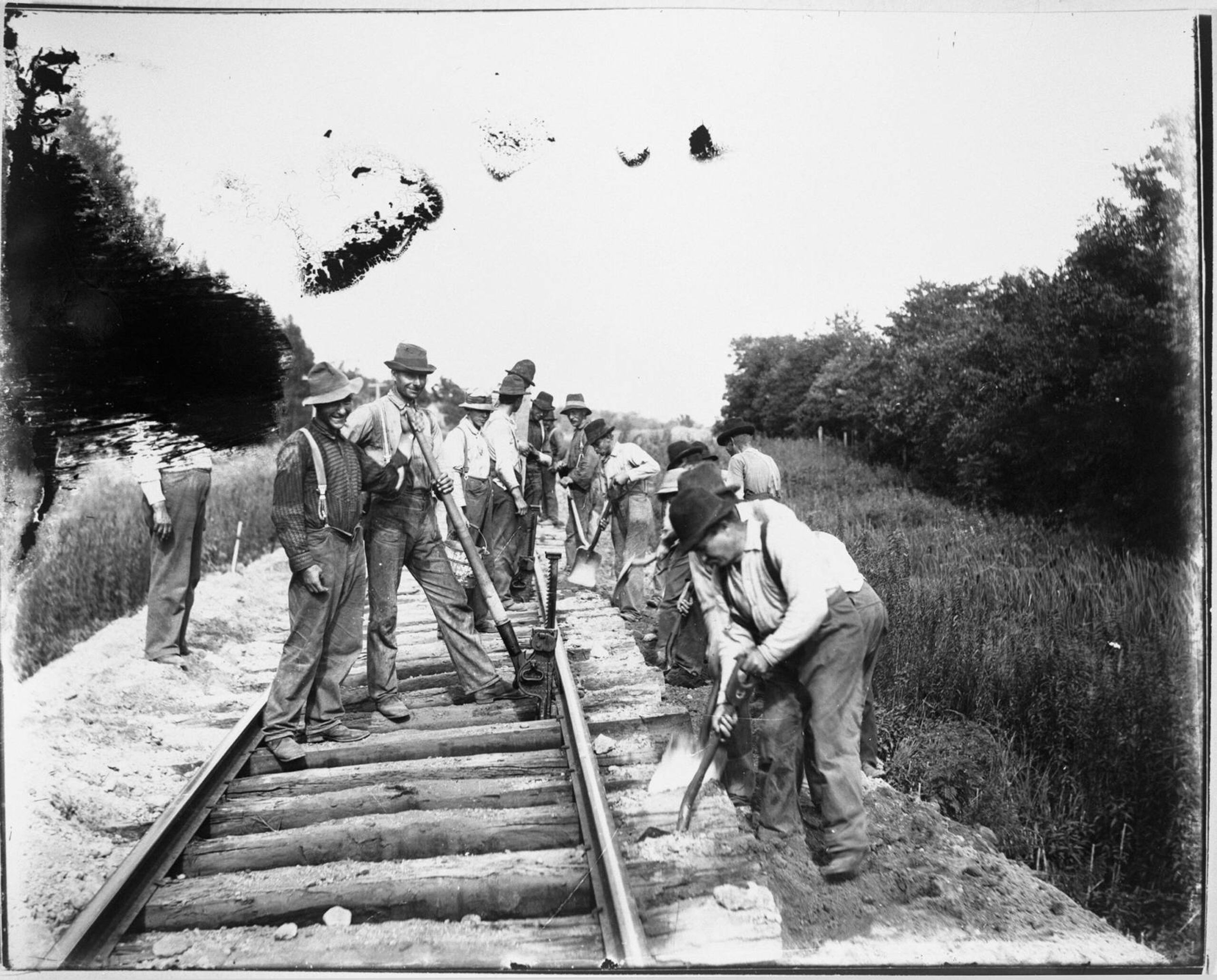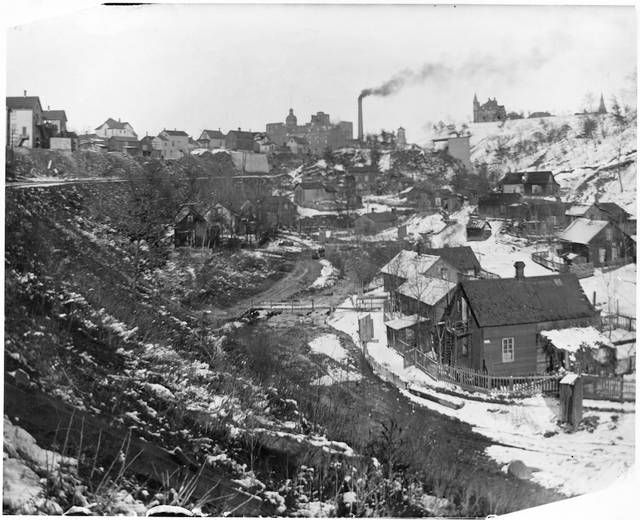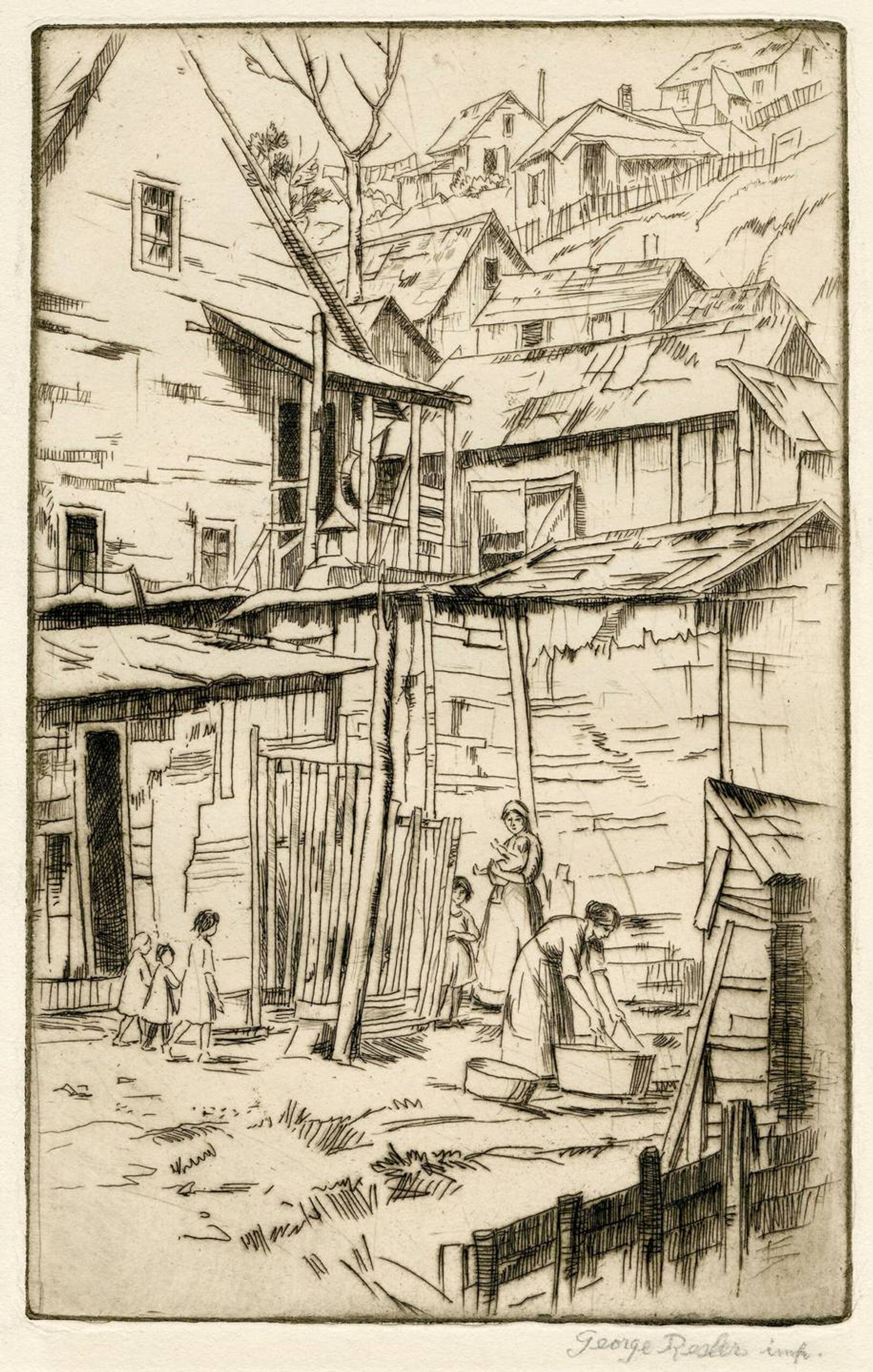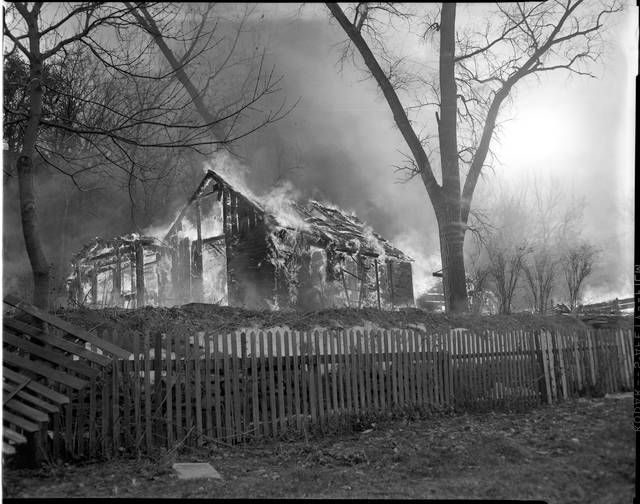Swede Hollow
Tucked away from the rest of St. Paul, a secluded urban village was home to a community of immigrants for more than a century.
When families left and abandoned their homes, new families took their place and brought new customs and traditions with them.
In 1886, 110 families with a total population of about 600 lived in Swede Hollow. By 1905, the census estimated over 1,000 people lived in the area. An eighteen acre area of land with a creek running through it and sixty to eighty foot high cliffs on either side, at this time Swede Hollow was almost exclusively residential, with a saloon as its only public space.
The ravine landscape made the area hospitable during the winter and cool in the summer, attracting trappers, lumbermen, and laborers. It attracted the likes of Edward Phelan, an early settler of St. Paul (and Minnesota's oldest murder mystery suspect) who claimed a new piece of land near Swede Hollow in 1839.

Despite America's promise of a "melting pot", many immigrants found themselves socially ostracized. While businesses encouraged immigration as a source of cheap labor, immigrants found it difficult to adapt. Swede Hollow became a neighborhood where immigrants could transition into American culture or adapt only as much as necessary.
Immigrants Arrive
In the late 1850's Swedish immigrants moved into the vacant structures left behind by the laborers. The first Swedish settlement in the city was a grouping of modest single-story homes. The Swedes paid St. Paul a small rental fee to live in the shanties. They called their homes "Svenska Dale" (Swedish Dale) leading to the more common name of Swede Hollow.

Around the 1880s, Italian immigrants joined the community, followed by Mexican immigrants during WWI in the 1920s. Swedish, Polish, Italian, and Latinx immigrants walked along the railroad tracks from Union Depot to Swede Hollow with notes pinned to their shirts to direct them towards family members already living there.
The community grew slowly but steadily. As streams of immigrants arrived, they built and expanded the area. Some left the neighborhood after accumulating savings and a basic understanding of the English language. When families left and abandoned their homes, new families took their place. They brought new customs and traditions with them.
Living in Swede Hollow
The houses did not have running water or electricity, and outhouses stood on stilts above the creek. But, the Swedes strove to make the neighborhood inviting and presentable. They added porches and gardens to their home and planted flowers inside old washtubs, which they placed against the hill to prevent erosion.
When Italian immigrants began to arrive in the late 1880s, they took over the homes abandoned by the Swedes and added picket fences and vegetable gardens.

The city of St. Paul largely ignored Swede Hollow. Residents were responsible for maintaining the neighborhood but this led to its own issues. During the winter they were separated from the rest of the city when the only road leading out of the community was blocked by snow and complaints of the smell emanating from the ravine were common.
Italians remained in Swede Hollow until the 1920s when they moved up the hill to Payne Avenue and other nearby streets, just as the Swedes had done decades earlier. In their place, Mexican immigrants arrived to become laborers on sugar beet farms.
The Last Residents
By 1930, The St. Paul census listed 628 Mexican residents. In 1935 the number increased to 1,500 and in 1940 it climbed to 2,000.Unfortunately, scholars know little of this era of Swede Hollow.
In a 1956 investigation of Swede Hollow, health officials found that the homes still did not have a sewer or water facilities. After testing the water for contamination, they declared the neighborhood a health hazard. At the time, there were still sixteen families living in the neighborhood in thirteen houses.
City officials were surprised to find that the families continued to live in the neighborhood, not because the rent was cheap, but because they liked living there. After the city evicted the residents, five of the families purchased homes for $16,000. Two families rented homes in other parts of the city, and eight found lodging in public housing developments.
On December 11, 1956, the St. Paul Fire department unceremoniously poured gasoline into the ravine and set Swede Hollow ablaze. City officials had deemed the area a health hazard and hoped modern manufacturing plants would "bloom" from the ashes of "ancient edifices and old Indian trails". In reality, the area grew wild during the 1960's and in the 1970's became a dumping ground for trash. In October of 1976, however, it was dedicated as a nature center and is now a city park, Swede Hollow Park.



